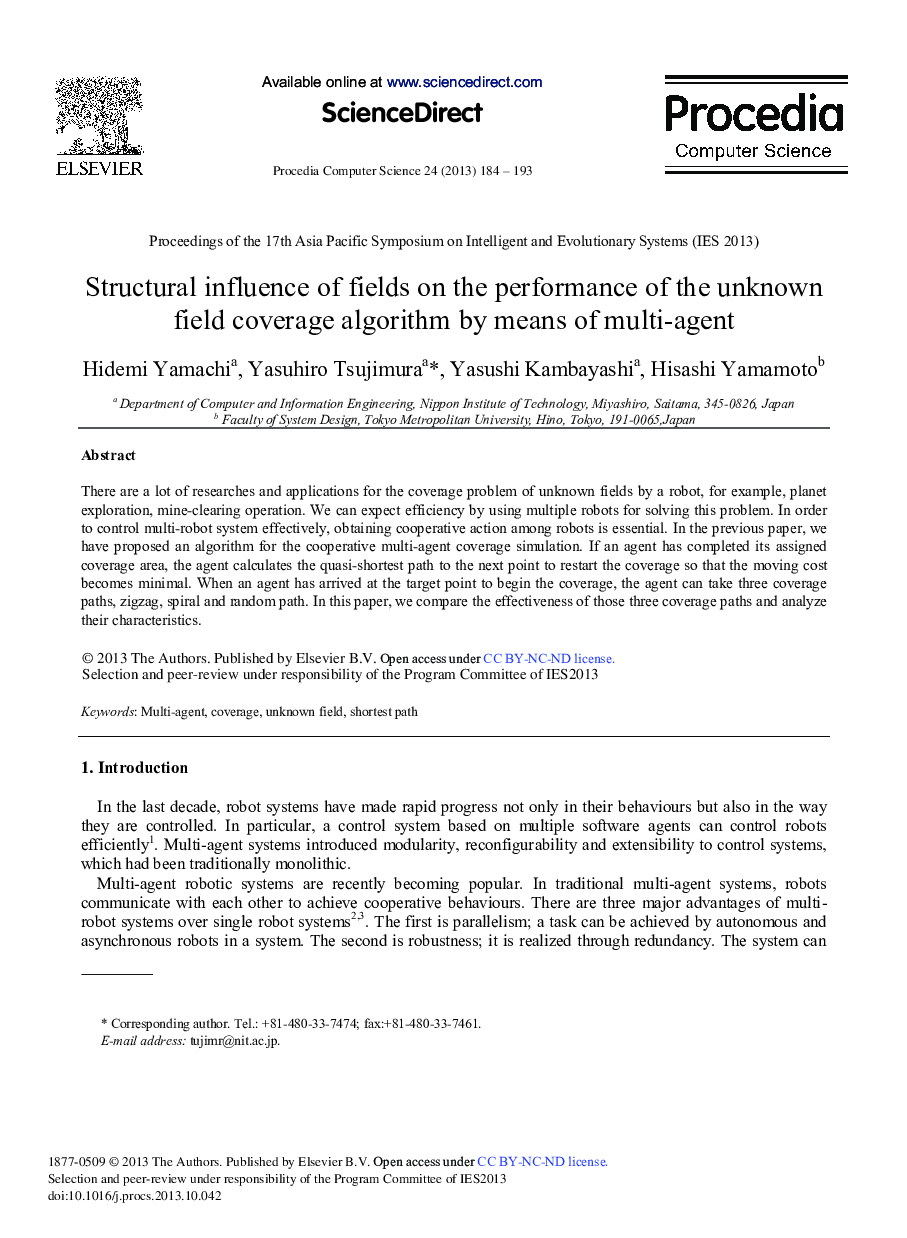| Article ID | Journal | Published Year | Pages | File Type |
|---|---|---|---|---|
| 485313 | Procedia Computer Science | 2013 | 10 Pages |
There are a lot of researches and applications for the coverage problem of unknown fields by a robot, for example, planet exploration, mine-clearing operation. We can expect efficiency by using multiple robots for solving this problem. In order to control multi-robot system effectively, obtaining cooperative action among robots is essential. In the previous paper, we have proposed an algorithm for the cooperative multi-agent coverage simulation. If an agent has completed its assigned coverage area, the agent calculates the quasi-shortest path to the next point to restart the coverage so that the moving cost becomes minimal. When an agent has arrived at the target point to begin the coverage, the agent can take three coverage paths, zigzag, spiral and random path. In this paper, we compare the effectiveness of those three coverage paths and analyze their characteristics.
